Sigma 24-70mm F2.8 DG DN II | ART Review
Dustin Abbott
May 16th, 2024
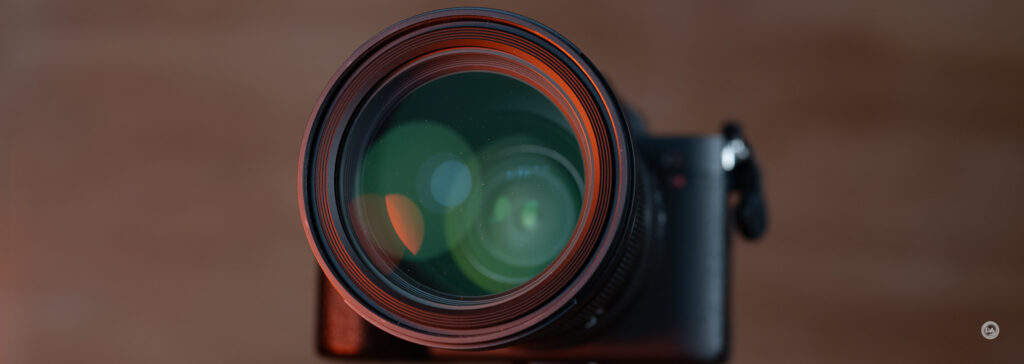
Sigma 24-70mm F2.8 DG DN II | ART Review
The lens market has perhaps never been more competitive than it is right now, with literally hundreds of lenses available for Sony’s E-mount. At the beginning of 2020 Sigma launched the 24-70mm F2.8 DN | ART lens (my review here), a full featured, high performing fast standard zoom that went head to head with Sony’s 24-70mm F2.8 G Master (my review here). I think the Sigma was very nicely competitive with the 24-70mm GM, but the problem is that the market doesn’t freeze. Sony released a MK II version of their GM lens (my review here), and it was vastly improved. Smaller, lighter, more feature rich, and with vastly improved autofocus along with a stronger optical performance. It’s also $2300 USD, so it definitely sets the upper limit for performance and price. Tamron improved their 28-75mm F2.8 lens with a new G2 version, and it too was vastly improved (my review here). It remains an incredible value at $900 USD (currently just $700 on sale at the time of this review). So Sigma has returned with a new and improved lens themselves – the Sigma 24-70mm F2.8 DG DN II | ART. The Sigma is priced higher than the Tamron but much lower than the Sony at $1200 USD. For many people this will be the “Goldilocks” option…just right. But just how much is this “new and improved” lens actually improved? We’ll explore that question in either my video review below or in the text review that follows.
Follow Me @ YouTube | Patreon | Instagram | Facebook | DA Merchandise | Flickr | 500px | X
Thanks to Sigma Canada (Gentec) for sending me a review loaner of this lens. As always, this is a completely independent review. *The tests and most of the photos that I share as a part of my review cycle have been done with the Sony a7RV along with the Sony Alpha 1 that serve as my benchmark cameras for Sony lenses.
__________________________________________________________________________________________________
In their press release Sigma is touting improved optics, faster AF speed, more features, and a more compact size. Some of those key new features include:
- An aperture ring
- An additional custom/function button
- Aperture delick function
- Aperture iris lock
- New flush mounted switches
I brought in a copy of the first generation lens to test those claims. Some improvements are more pronounced than others. The size difference, for example, is very subtle. You need to have the lenses side by side to see that the new lens is slightly slimmer and shorter.
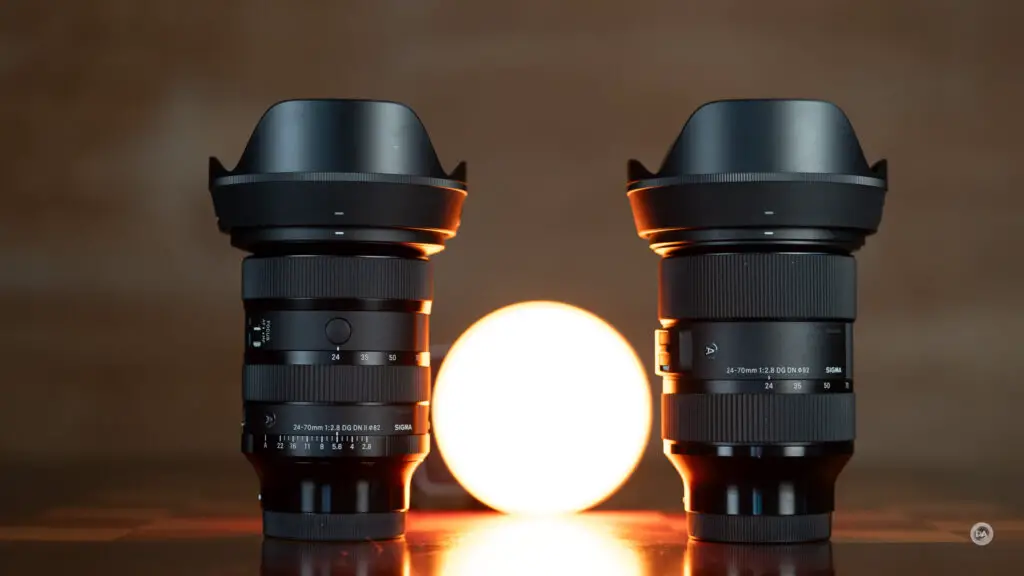
While those physical differences appear subtle, it does add up. The new lens weighs 100g less (the Sony E-mount version weighs 735g). That doesn’t quite match the weight loss for the new G Master II lens as that lens has trimmed to just 695g. In the first generation, the G Master was the heavier lens (886g) while the Sigma was slightly lighter (835g). That has obviously reversed here despite the weight loss program Sigma has put its new lens through. This is a competitive market!

But let’s not forget that the Sony GM II lens is a whopping $1100 more than the new Sigma, so I suspect that many photographers will be willing to carry both the extra 40g along with the extra weight of all that leftover money in their pockets! And, as we can see above, the Sigma 24-70 DN II is capable of producing some lovely images. We’ll dive deeply into the performance and new features together.
Build and Handling
Sigma’s build standards are continually evolving, and they have been very proactive about adding new features and improvements. We’ve noted that the physical size isn’t radically different between the MK II and older lens, but the new features definitely change the the way that the real estate is distributed. From the front you see how the additional ring (aperture ring) means at the two other rings need to be a bit smaller.
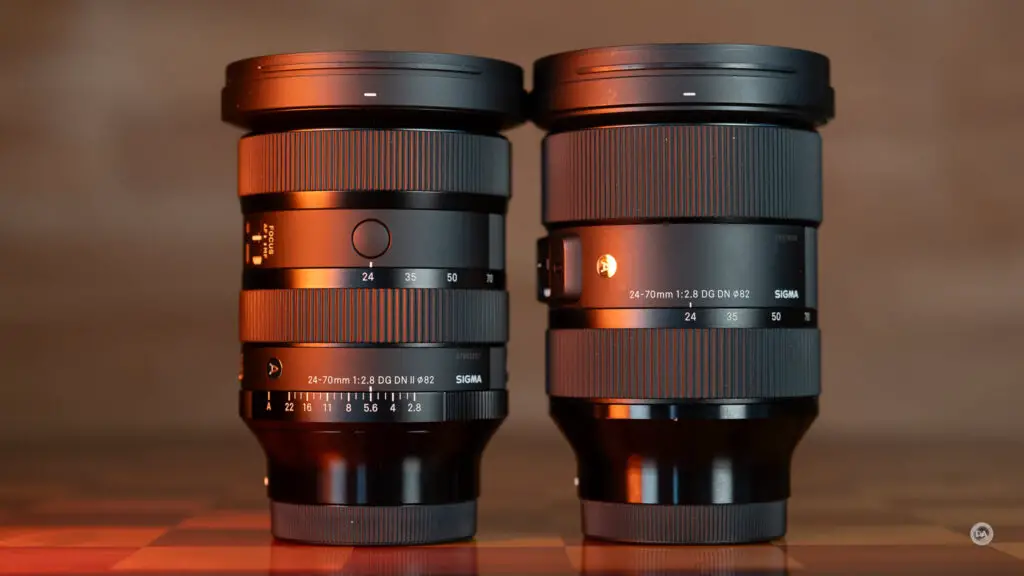
You can also see from this angle how that the switches were previously on a raise bank on the side of the lens and now have been implemented directly into the lens barrel, making that section of the lens much slimmer.
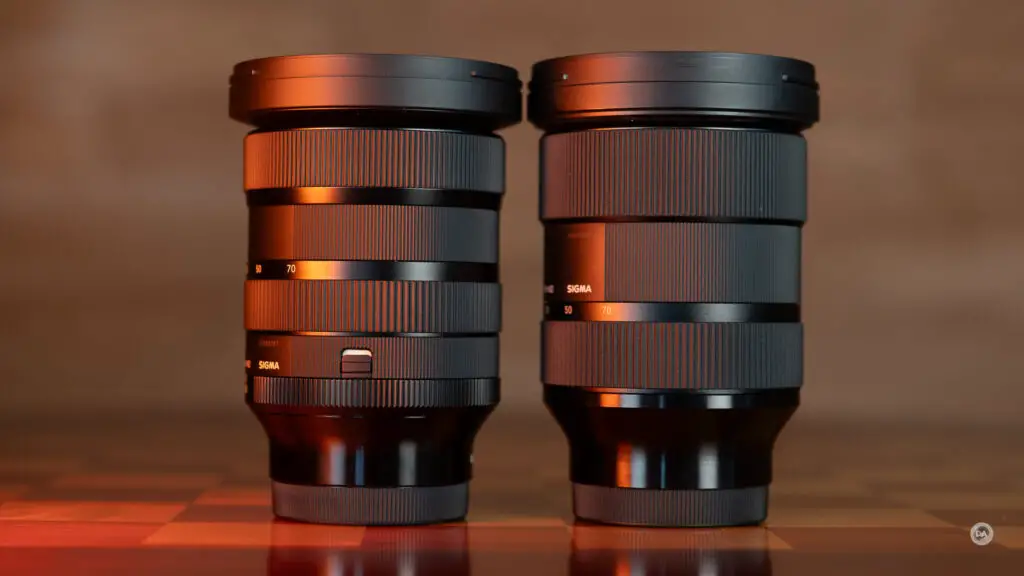
Rotating the lens to the side shows a different appearance. Near the lens mount you’ll see the ribs of the aperture ring along with the iris lock that is now part of the design. The iris lock will allow you to either lock into or out of the aperture ring. For those that want to use the aperture ring and not inadvertently switch into camera based aperture control, the lock can be engaged while you are in the aperture ring and keep you there. If you’re not an aperture ring person you can switch the lens into the A position and control it from within the camera. Engaging the iris lock while in A assures that you won’t inadvertently bump into manual aperture control.
The new design gives more equal size to the two other rings (zoom and manual focus) while adding a third ribbed section in between them for grip and aesthetics. This visually balances the rings from this angle. There is a glossy section of barrel in between each of these rings. The zoom ring is very slightly raised from the lens barrel, and the zoom ring is tapers out wider to give it a different feel when reaching for it without looking. The diameter of the two lenses is identical (87.8mm/3.5″), but that’s only because the widest point continues to be the very front of the lens to accommodate the rather large 82mm front filter threads.
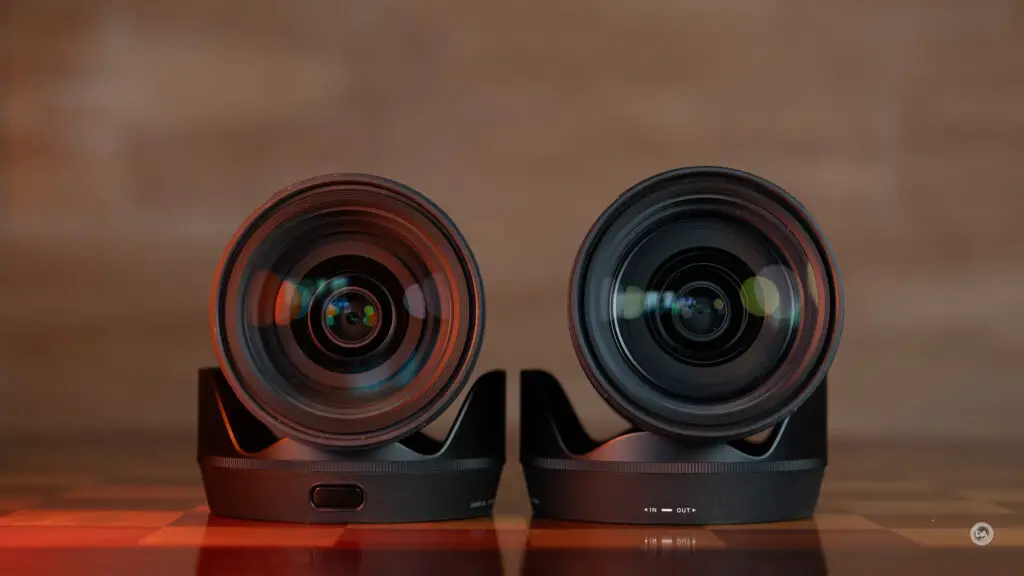
The diameter of the two lenses looks identical from this angle, but we can see that practically almost all of the touch surfaces on the lens are functionally slimmer.

The left side of the lens looks different as well. You can more prominently see the flush mounted AF/MF switch along with the function button. Removing that raised section eliminates unnecessary bulk from the lens. The click/declick switch is integrated on this side as well. I appreciate how nicely the aperture ring is implemented. It neither adds bulk to the lens nor takes away from sculpting of the lens barrel.

The bottom of the lens features the zoom lock switch. This switch has a different shape, which is wider and shorter. The lens will only lock at the 24mm position, and, unlike some, if you put a lot of pressure on it, the lock will release so that it never actually stops you from getting your shot.
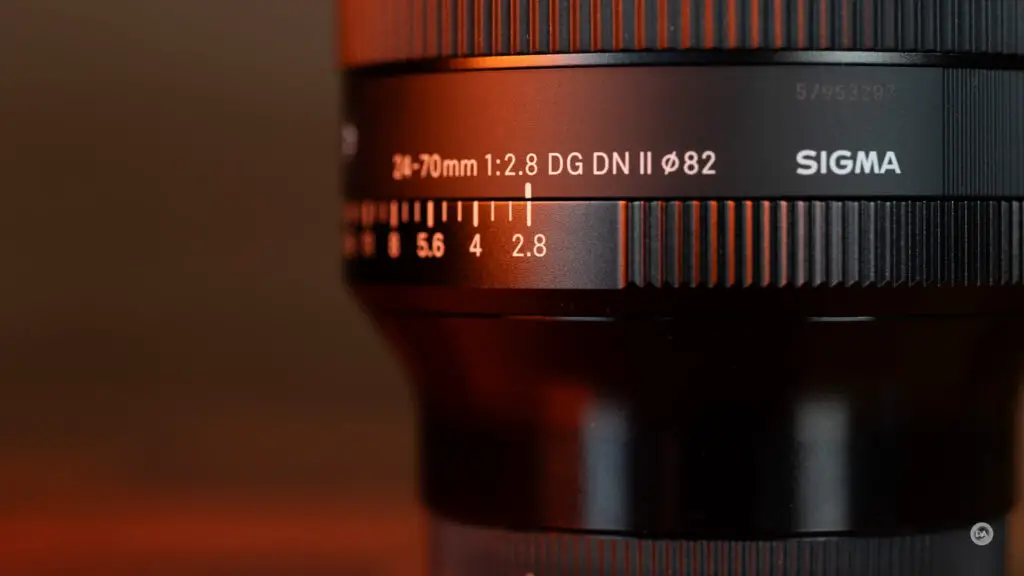
The aperture ring works great, giving you precise control at 1/3rd stops when in clicked mode, and gliding smoothly through the whole aperture range when declicked.
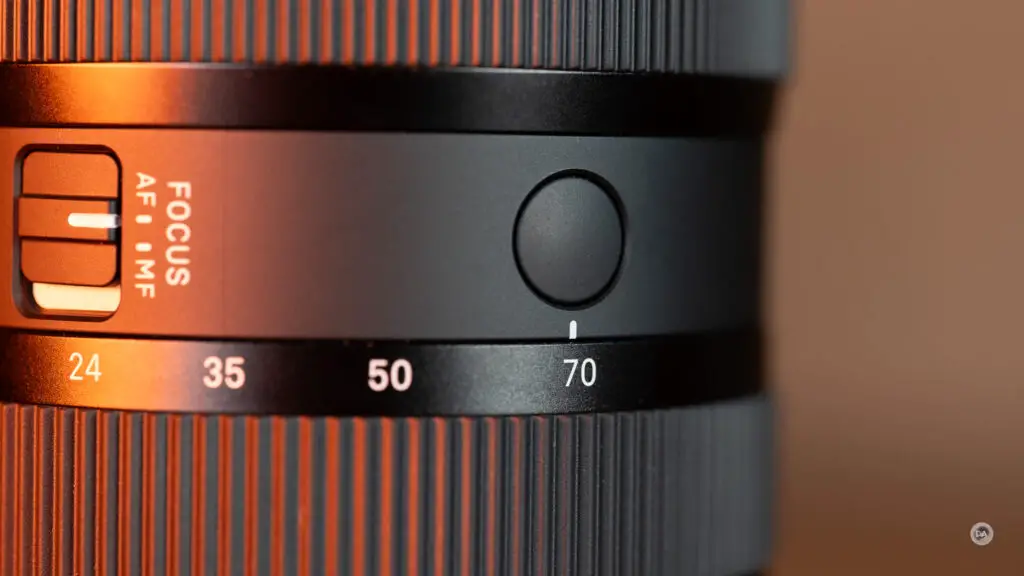
There’s also an additional function button on the top of the lens to allow you to have one easily to hand when shooting in a vertical position.
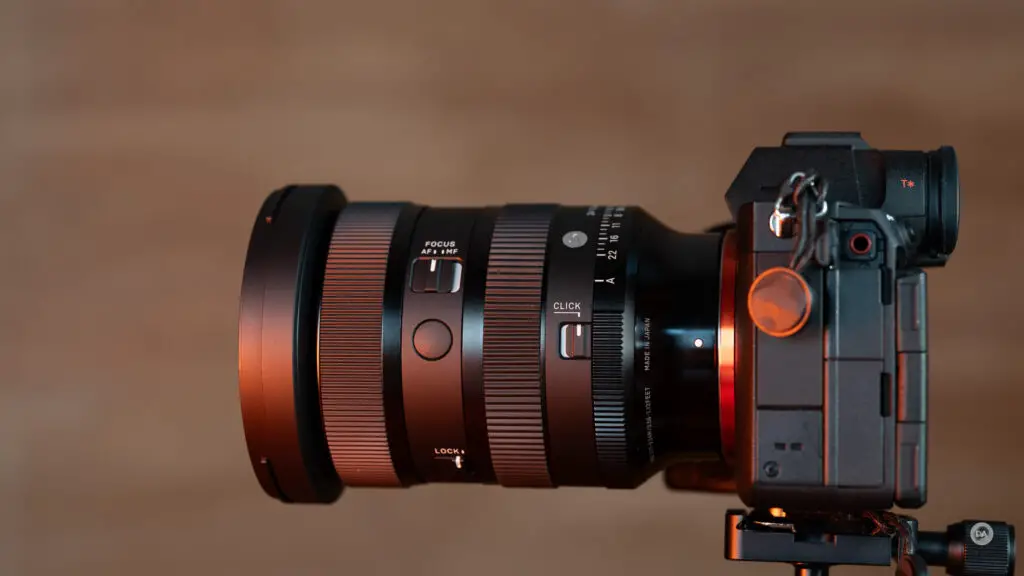
While I haven’t seen a cutout diagram of the weather sealing points, I do know that Sigma has more thoroughly weather sealed this new lens. It was a complaint of some users that the previous model got dust into it after a while of use, and Sigma has worked to address that here.
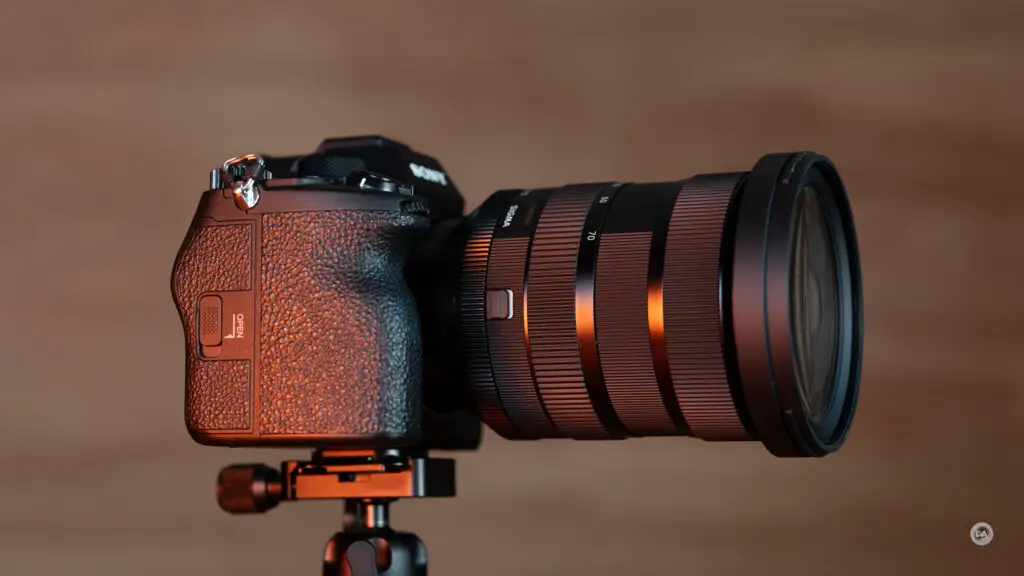
The basic dimensions of the lens are 87.8mm (3.5″) in diameter and 122.2mm (4.8″) in length. We’ve already seen that overall length is not much more than a millimeter shorter than the previously lens. The 24-70 DN II weighs in at 735g (25.9oz).
As always, Sigma includes the lens hood and a padded case. The lens hood has a different designation but looks identical to the old hood and is functionally the same. I could use the old hood on the new lens and vice versa.
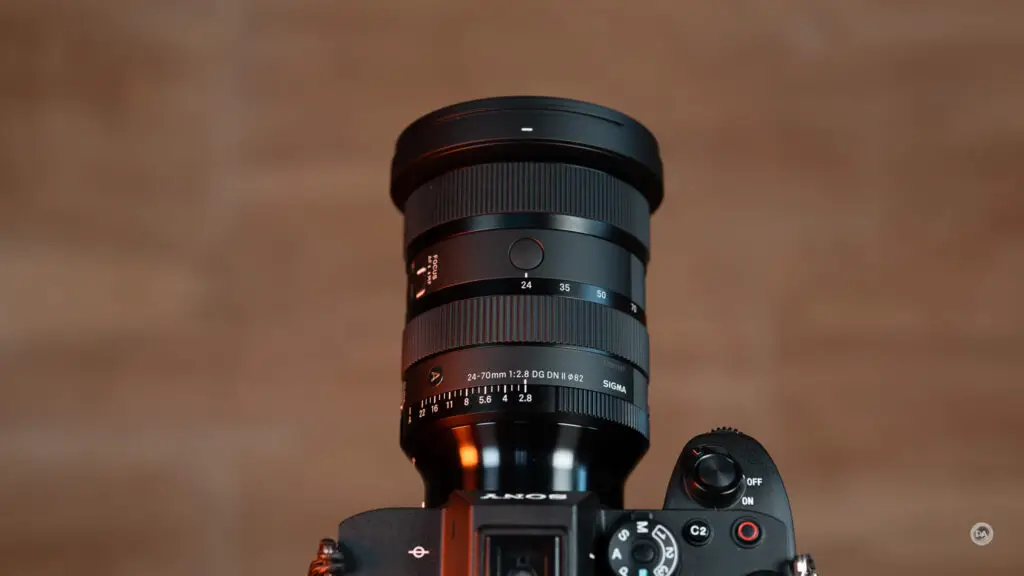
I prefer the feel of the new manual focus ring. Though slimmer, it has more weight/feel to it and makes for a better manual focus experience.

The zoom action remains precise, smooth, and well damped, with a roughly equal inner barrel extension length to the previous lens.
The aperture iris has added a few blades, moving from 9 blades to 11 blades in the newest version. This helps keep the aperture iris shape circular even with the lens stopped down.
Sigma has further improved the minimum focus distance on the lens on both the wide and telephoto ends of the zoom. On the wide end the MFD has been shortened from 18cm to 17cm, though since this is a fairly long lens, this actually falls inside the range of the lens hood. This is how close I could get to my test chart on the wide end:

Obviously the practical applications for getting this close to your subject are pretty slim, but if you don’t mind getting right on top of your subject (and can get enough light there), you can achieve a 0.37x magnification level, which is higher than the 0.34x magnification previously available.

You can also shoot closer on the telephoto end, where the MFD has been reduced from 38cm to 34cm. The magnification level is a lower 0.25x, though that has grown from the 0.22x achievable with the older lens and is much easier to achieve in real world conditions.

You’ll note that even on the telephoto end the plane of focus isn’t particularly flat, so up close this is a lens that works better on isolating individual subjects than by trying to photograph something flat.
There’s a lot to like here, as Sigma has really upped their game once again to match what Sony is doing with the G-Master series. They’ve managed to fit more features and functionality into a very slightly smaller but more noticeably lighter lens…and done it without increasing the price, which is a huge bonus.
Autofocus and Video
This is another area where Sigma has made some key strides. Their initial offerings on Sony (and L-mount) featured STM focus motors, but Sigma has since released their more powerful, smoother HLA focus motor (High speed Linear Actuator). The HLA motor has much more torque/thrust, resulting in 3x faster maximum drive speed. That doesn’t quite mean 3x faster autofocus, but rather that the focus motor is capable of moving much faster and is thus much more reactive. Real world focus changes are essentially instantaneous. Now, to be fair, I didn’t really have an issue with focus speed for ordinary photography with the older lens, either, and in my basic focus tests I didn’t see a big difference.

Where this new lens will shine, however, is in the situations where faster reactiveness is needed, so as action shots or those situations where you don’t have much time to set up a shot and just need to shoot quickly. The shot above is from late in a burst of shots of Nala where she has gotten close to the camera and I’m actually having to pan laterally to keep her in frame.

Throughout a burst of 70 shots I saw pretty much flawless focus results.
Focus sound is basically nonexistent. You can hear some faint clicking and whirring during focus with the older lens, but the new HLA motor is essentially silent even if I put my ear next to the lens.
Focus accuracy is good, too. I don’t really recall any shots during my review having been missed due to poor focus.

I also saw excellent results for video work. Autofocus pulls were fast, smooth, and well damped. No hunting or settling, and in the middle of the range where I did my test (about 35mm) I saw very little focus breathing.
My hand test also went well, with smooth and confident transitions from my hand to my eye and back as I alternately blocked the camera’s view of my face and then removed it. The minimal focus breathing helps those transitions to look smooth and not disruptive.
I used the 24-70 DN II for several of my YouTube video episodes, and focus was rock solid during those episodes.
I had no problems with focus, period. This is definitely an area of improvement that will help the lens stay more competitive with Sony’s GM lens. The primary disadvantage at this point is the fact that Sony limits bursts to 15FPS with third party lenses, so the GM does have the advantage when using Sony’s sports cameras.
Image Quality Breakdown
There is less change on the optical end. The optical design is basically the same as before (19 elements in 15 groups), though Sigma notes that a few of those aspherical elements are now thinner and thus overall corrections are improved. Think of this more as an optimization of an existing optical design rather than a new optical design. The MTF chart shows improvement particularly on the sagittal plane (solid line) with a more noticeable improvement on the telephoto end.


The truth of the matter is that I found the optical performance of the older lens pretty good even when testing on a 61MP body, though obviously any improvements are welcome.


On paper that MTF chart looks pretty similar to the excellent optical performance from the Tamron 28-75mm F2.8 G2 lens, which is to say, pretty much good enough for anyone.
Sigma emphasized the control of aberrations in their press release, so I was surprised to see a bit more longitudinal chromatic aberrations (LoCA) than what I expected.

I saw a bit of that blue/green fringing in this shot.


I saw less of an issue with LaCA (lateral chromatic aberrations), which shows up along the edges of the frame. You can see that everything is nice and neutral in these branches near the edge of the frame.


I don’t really see appreciable difference when it comes to amount of vignette and distortion on the new lens. There’s still a fairly strong amount of barrel distortion that has the same basic nonlinear pattern.
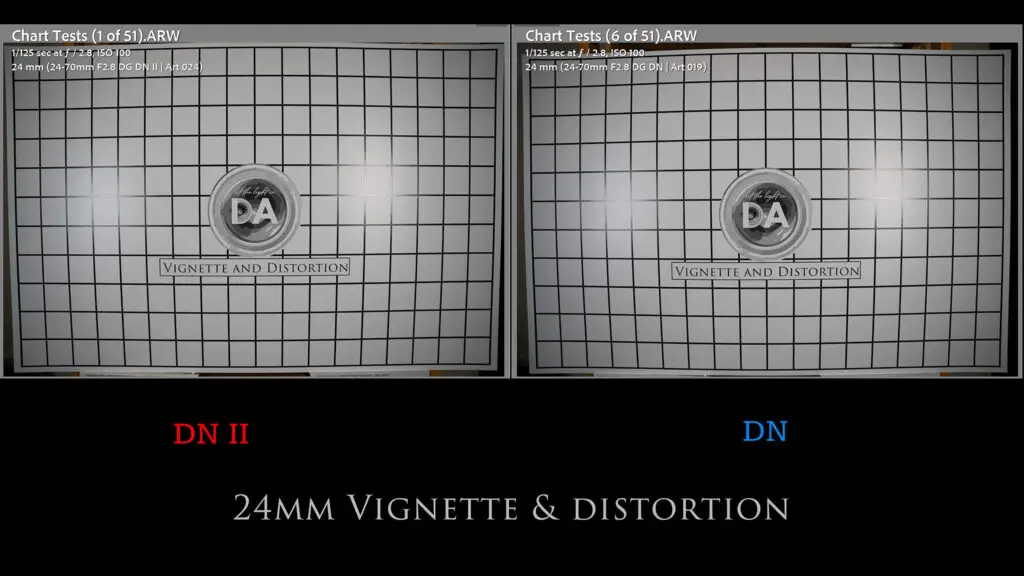
On either lens the nature of the distortion doesn’t really lend itself to manual correction very well because it isn’t a linear distortion. Correcting the lines in the center of frame result in inverting the outer edge lines into a pincushion style distortion.
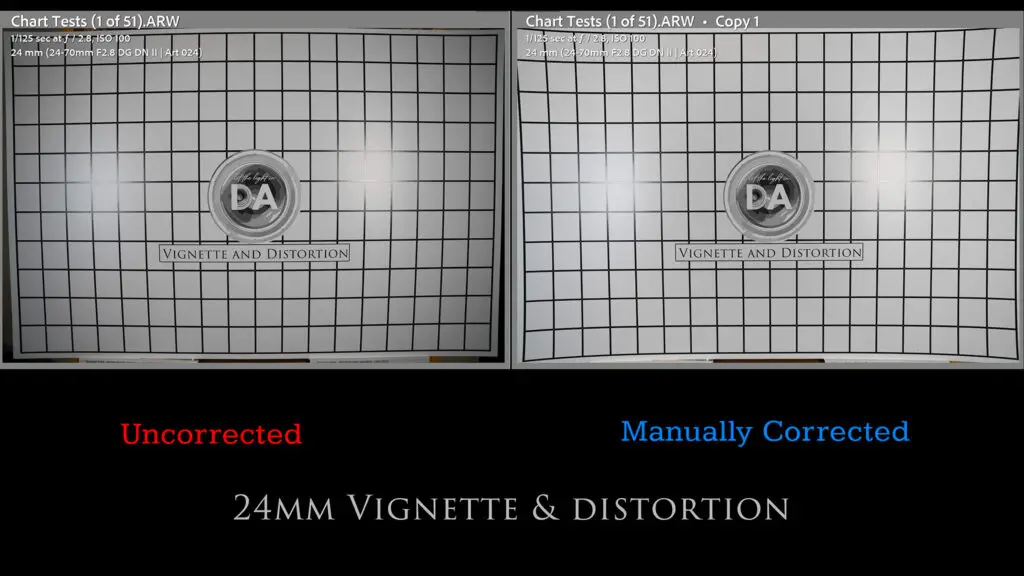
I had to use a +24 to achieve this correction, but I’m not sure it’s an improvement…unless you were cropping the outer portion of the image. The correction profile is the way to go, obviously, as it tailors the correction to the unique distortion pattern of this lens.
Vignette is also quite heavy here, requiring a +76 to correct, which, incidentally, is identical to what I needed to use to correct the older lens. It is worth noting that if this is an area that concerns you, both the GM II and the Tamron 28-75mm G2 both have much lower amounts of distortion and vignette (though the Tamron isn’t as wide, obviously), and what distortion they do have is more linear in nature.
That distortion changes to some pincushion distortion in the middle of the zoom range and through the telephoto end, but both the distortion and vignette are much lighter and easier to correct…as is typical for zooms like this.

I would have liked to see some progress on this front, but as the image above shows, real world results aren’t bad.
So how about resolution and contrast?
It’s important to remember that this is more of an optimized optical design rather than a fresh one, so one shouldn’t expect the improvements to be huge…and they aren’t.
The MTF shows a roughly 4% improvement in the center of the frame at 24mm, but I don’t really see it even at a 200% magnification side by side with the first gen lens.
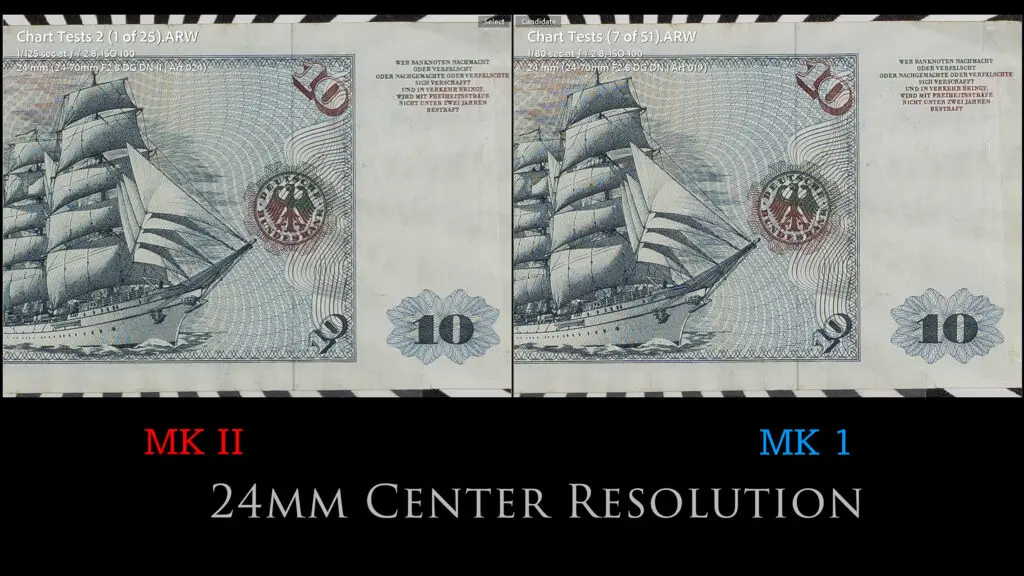
The MTF suggests we should see more noticeable improvement in the corners at 24mm. And while contrast and detail still aren’t fantastic there wide open, we can see some improvement to the detail in the lines of the building near the far corner.
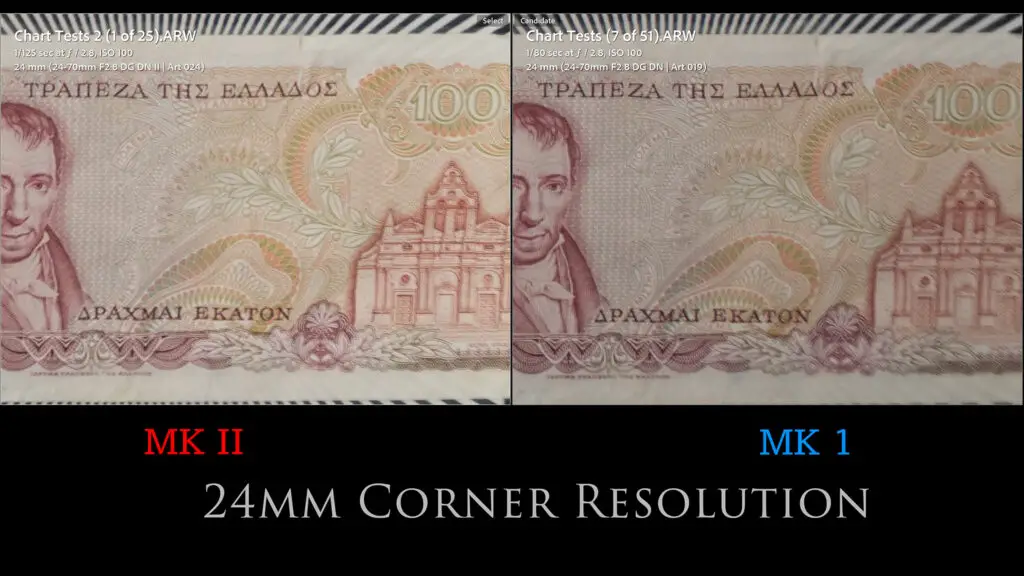
I went back and took a look at the 24mm side of the Sony 24-70 GM II, and found that the Sigma looks a hair better in the center of the frame while the GM lens was a bit better in the mid-frame and the corners. Here’s a look at the mid-frame:

The award for the strongest corner performance goes to the Tamron 28-75mm G2, though, as always, this must come with a caveat because 28mm is nowhere near as wide as 24mm and is easier to engineer for. Tamron’s approach was to design an easier zoom range and make it smaller, cheaper, and optically superior. In this case that produces a win.

For many photographers, however, not going to 24mm in the zoom range might mean having to purchase an additional lens for wide angle photography, so slightly softer corners might be worth it.
But do those corners sharpen up?
At 24mm the mid-frame looks fantastic by F4, though the corners still have a ways to go.

Peak corner results don’t arrive until F8, and so that should be your preferred aperture if you are shooting landscapes or other scenes where you want everything in focus and detail all the way out to the corners.
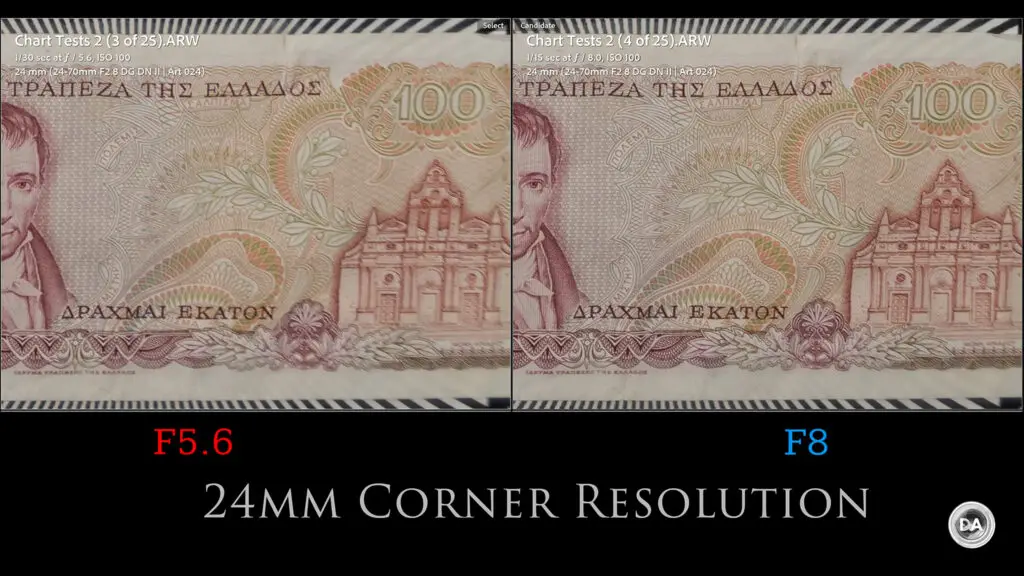
After F8 diffraction will start to set in on high resolution bodies. F11 still looks good, but by the minimum aperture of F22 the image looks quite soft due to the effects of diffraction.
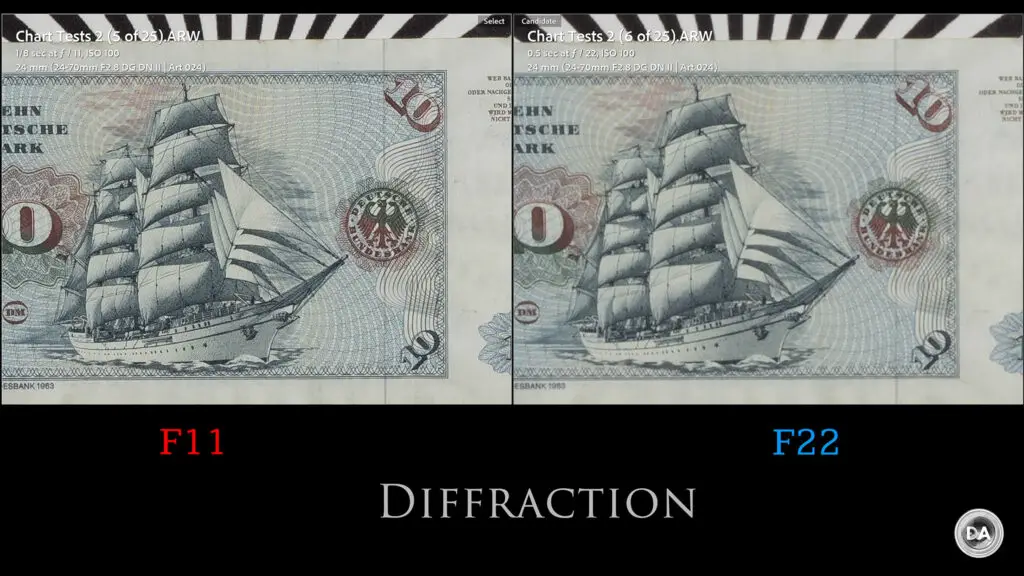
I was happy with real world landscape shots at F5.6 and F8. Detail across the frame looks great (even on 61MP), and I noted when shooting the same scene with a less expensive wide angle prime lens that the Sigma handled the intense midday light and colors better. There’s solid optical glass here.

Moving on to 35mm I found that wide open resolution was more similar than different. There was some give and take at various points in the frame, but I would say that image quality was very slightly better at 35mm. You will be dealing with less vignette and distortion, and that does allow slightly better midframe and corner performance. I felt like real world results at 35mm were a bit stronger, with great contrast and detail even at the edges of the frame.



The sharpness profile is a little different at 50mm. It is noticeably softer compared to the 35mm in the center of the frame but a bit stronger in the mid-frame and corners.
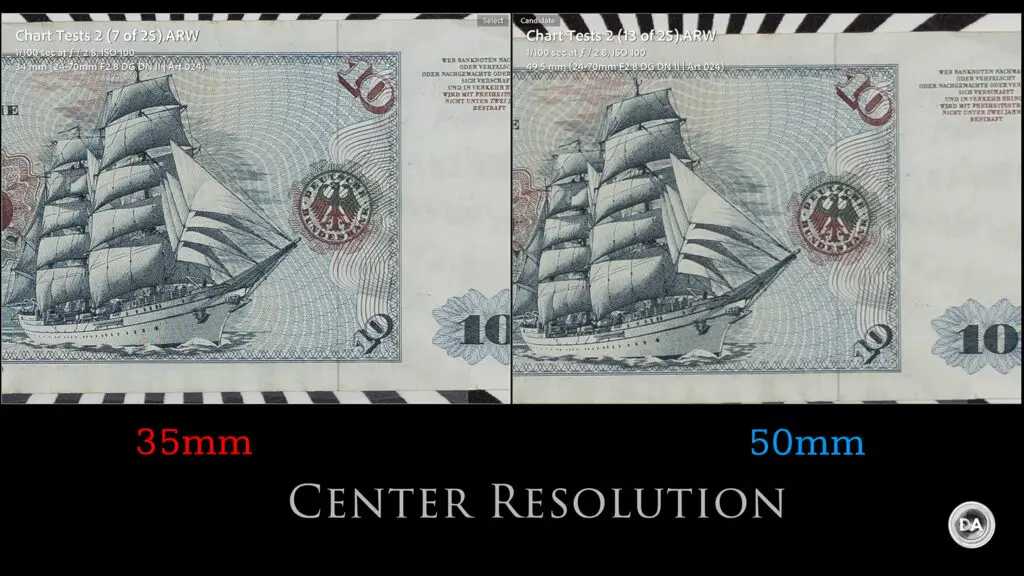
Again, for some perspective, however, you can see that even at F2.8 (on 61MP) that a real world landscape shoot looks pretty great throughout the frame.



Finally, on to 70mm. The MTF suggests that we should see a roughly even center performance, with some improvement in the mid-frame and corners (though mostly on the sagittal axis). Unfortunately I felt like my review copy wasn’t completely centered at 70mm, and so my findings (which I repeated 3x to be sure they were correct) showed a stronger performance on the left side of the frame than than right.
The center of the frame performance looks mostly like a wash between the two lenses (as suggested), with a roughly equal mid-frame performance on the right side of the frame but a stronger showing for the new lens on the left side of the frame (as you can see below).
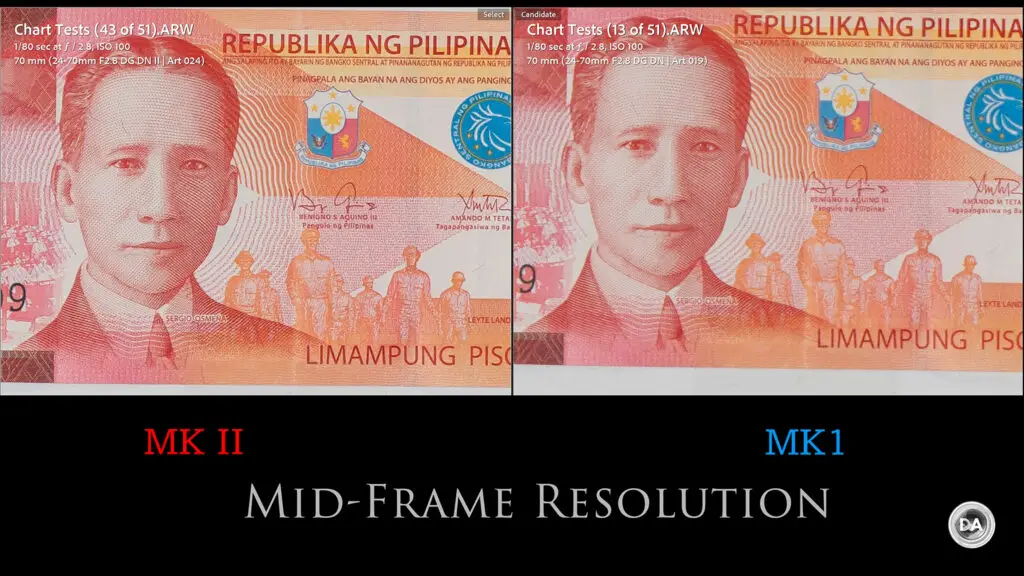
The winner in the corners really depends on which side of the image you look at, which does suggest with a properly centered copy of the lens you should get marginally better corner performance than the first generation lens.
There’s a noticeable improvement in contrast and resolution at F4, and even the right side looks fantastic in the midframe.

The right side corner still isn’t looking great, but the left side does look stronger.
By F5.6 the corners (at least on the left side) are looking great. Here’s a look at the upper left extreme corner at F4 (left) and F5.6 (right).

By F8 even the weakest point in the frame is looking pretty good.
If we take a look at a real world image at F5.6 and look at the crops (about 140% magnification), we can see that left side (second image) does look sharper than the right side (third image), but both look just fine.



My review process is hypercritical because, for the most part, modern lenses are typically all quite good, and it takes careful examination to establish what is exceptional and what is not.
If we take a look at another real world shot of Nala on the move (70mm, F2.8), you can see from the detail crop that real world result is pretty great (note the little hair coming off her on the left side in the crop).


Bottom line: there is some give and take between the 24-70 DN II, 24-70 GM II, and 28-75 G2 optically, but the truth of the matter is that they are all exceptionally good lenses.
I do think a standout area for the Sigma is actually in the bokeh, which I find nicer than many standard zooms. You can see from the shot we’ve just looked at that the overall bokeh is nice and soft, and looks even better in the tighter crop.
Here at a medium distance I feel like the bokeh falls off nicely, and there is good contrast punch to the subject.

This shot of a chain link fence up close shows the ability to strongly blur a background when you get close at 70mm:

And if you should be able to get close to a subject at 24mm and still get some light on it, you can strongly blur out a background due to the macro-ish capabilities of the lens.

Flare resistance is a key area of strength here. I was basically unable to coax any flare or ghosting out of the lens on either end of the zoom range. The 22-pointed sunstar at 24mm in particular is quite nice, as well.
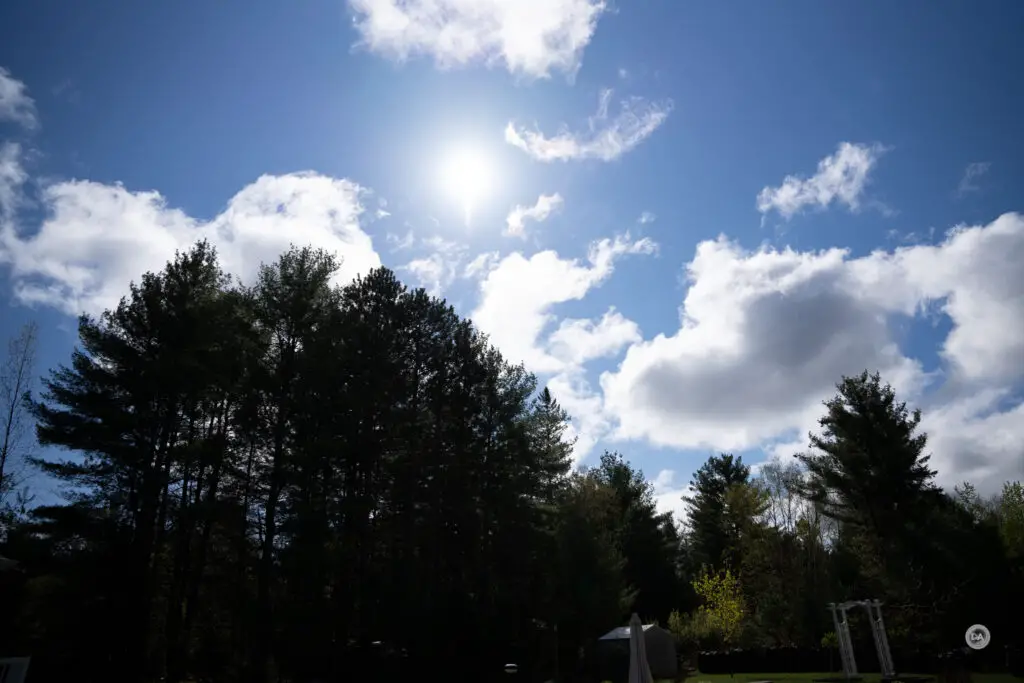
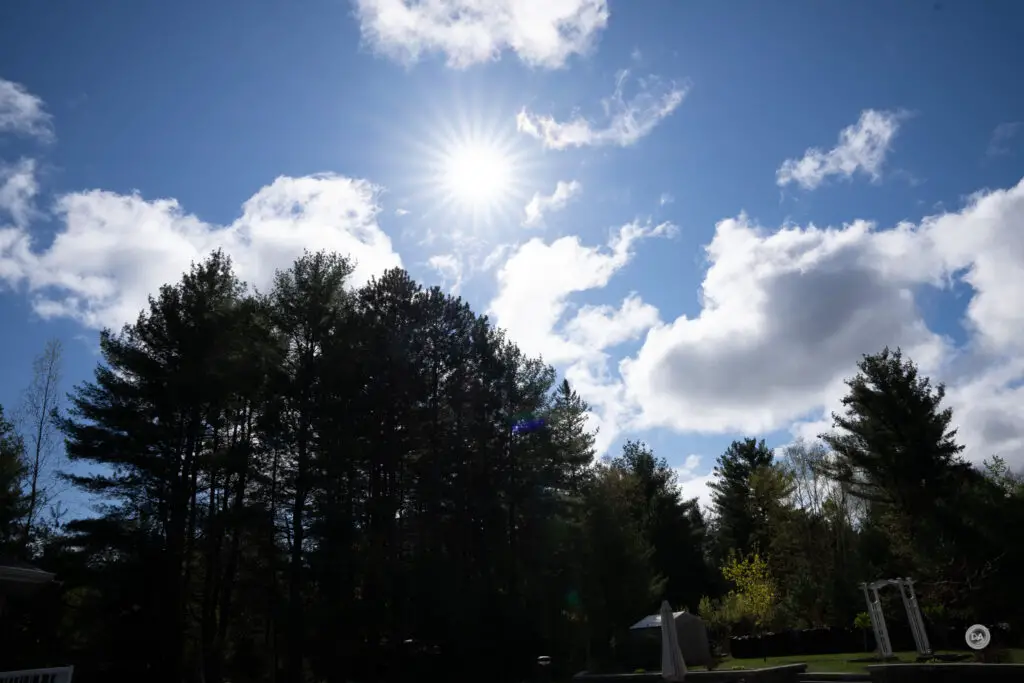



I haven’t had a chance to test coma this time around (astro conditions during my time with the lens have been poor), but I’ll show my results from the previous generation, and results should be improved as Sigma touts a reduction of sagittal coma in the MK II lens.
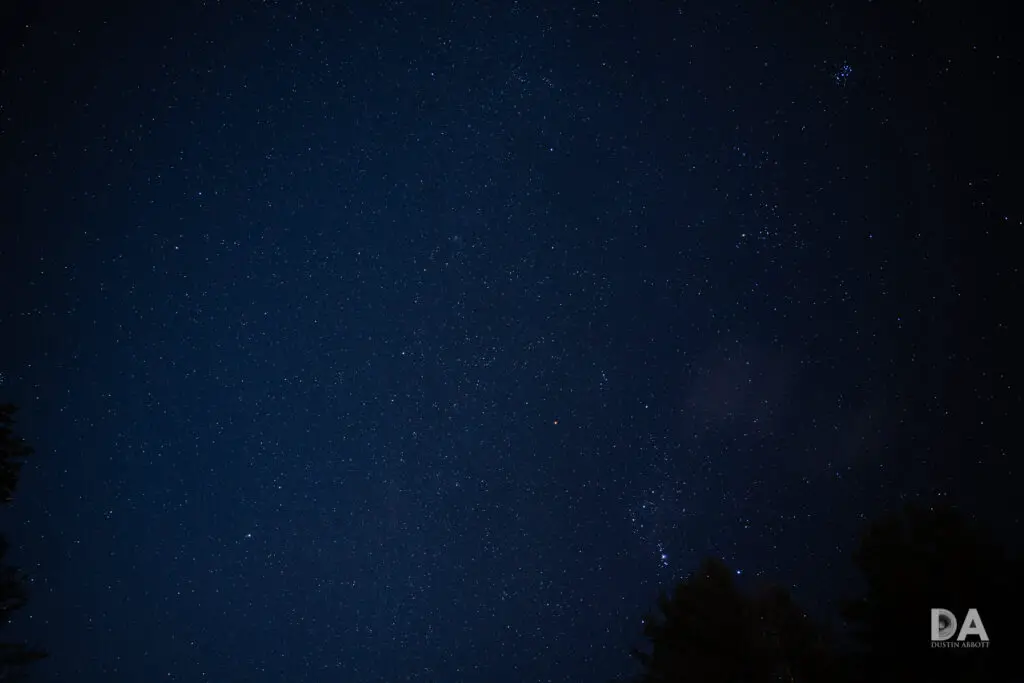


Standard zooms like this one are popular among wedding and portrait photographers due to the flexibility of the zoom range and the relatively large maximum aperture (for a zoom) allows for professional looking results. The Sigma 24-70 DN II has a nice combination of sharpness and bokeh, making for a very nice portrait zoom.

The optics are not improved as much as I expected, but things made more sense when I saw that we really aren’t working with a new optical formula. The truth of the matter is that the older lens was already very good optically, so even marginal improvements are enough to keep it competitive in this class. If you want to see more images, check out the image gallery for the lens here.
Conclusion
The Sigma 24-70mm F2.8 DG DN II | ART is a nice evolution of Sigma’s extremely important standard zoom for Sony E and L-mount shooters. It’s not a radically changed lens, but it does stay competitive with Sony’s G-Master line by following the trend of becoming lighter, faster focusing, and more feature rich. It also retains a core Sigma strength by offering up a lens that gives you at least 90% of the GM’s overall performance while costing essentially 50% of the price. That’s been a wining formula for Sigma for a long time, and they have a well established reputation for beautifully filling that middle tier of lenses where performance is high but the price is more attainable.

Sigma’s new HLA focus motors are great, and it makes this lens highly responsive to real world focus changes. The host of new features make this a better hybrid lens for video capture, and I was impressed by the video focus results as well.

My conclusion is that if you are in the market for a new standard zoom, then the Sigma 24-70 DN II is an intriguing proposition. It’s reasonably priced, covers the important zoom range, and has all the performance that a person could want. The Tamron 28-75mm F2.8 G2 is a very attractive alternative if you feel like you can live without going as wide as 24mm, as it is possibly even optically better and costs even less (though it isn’t quite as feature rich as the Sigma). The Sony 24-70mm F2.8 GM II remains the top choice if you need absolute performance and are willing to pay to get it. But for many people people I think the Sigma will be the “just right” option in between.

If you own the first generation Sigma 24-70mm DN, however, I think the decision is a bit murkier. There are definitely some key upgrades, but the new lens isn’t really much better optically, and its not like the autofocus (and even features) on the older lens were bad. It’s true that at retail the new lens is only $100 more, but the reality of selling the lens you have used means that the cost of upgrade will be much higher than that. You’ll have to decide for yourself whether the upgrades here are necessary for you and worth the extra money. What’s clear, however, is that Sigma is determined to stay competitive in the current lens market, and that makes us all winners because we have so many great lenses to choose from.
Pros:
- Many new and improved features
- Slightly smaller but more noticeably lighter
- As feature rich as the 24-70 GM II
- Fantastic autofocus system
- Great flare resistance
- Nice bokeh
- Good sharpness
- Good coma control
- Great close up performance
- Price to performance ratio is excellent
Cons:
- More distortion and vignette than competitors
- Not a big optical upgrade
- A bit more fringing then expected
- Corner performance lags behind rivals
_________________________________________________________________________
GEAR USED:
Purchase the Sigma 24-70mm F2.8 DN II @ B&H Photo | Nuzira | Adorama | Amazon | Camera Canada | Amazon Canada | Amazon UK | Amazon Germany
___________________________________________________________________
Purchase the Sony a7RV @ B&H Photo | Adorama | Amazon | Camera Canada | Sony Canada | Amazon Canada | Amazon UK | Amazon Germany
__________________________________________________________________
Purchase the Sony a7IV @ B&H Photo | Adorama | Amazon | Camera Canada | Sony Canada | Amazon Canada | Amazon UK | Amazon Germany
_________________________________________________________________
Purchase the Sony Alpha 1 @ Camera Canada | B&H Photo | Adorama | Amazon | Sony Canada | Amazon Canada | Amazon UK | Amazon Germany | Ebay
_________________________________________________________________
Want to support this channel? Use these affiliate links to shop at: B&H Photo | Amazon | Adorama | Camera Canada | Amazon Canada | Amazon UK | Ebay | Make a donation via Paypal
Buy DA Merchandise https://bit.ly/TWIMerch
Keywords: Sigma 24-70mm, DG, DN, ART, II, Sigma 24-70 II, 24-70mm II, #SIGMAEmount, #SIGMA, #SIGMA2470mmF28IIArt, #SIGMAArt, #SIGMADGDN, Full Frame, Review, Sony Alpha 1, Sony a7RV, Review, Hands On, Dustin Abbott, Real World, Comparison, Sharpness, Bokeh, Flare Resistance, Autofocus, Image Quality, Sample Images, Video, Photography, let the light in, weathersealing, #letthelightin, DA
DISCLAIMER: This article and description contains affiliate links, which means that if you click on one of the product links, I’ll receive a small commission. As an Amazon Associate I earn from qualifying purchases.










 Sirui Sniper 75mm F1.2 Review
Sirui Sniper 75mm F1.2 Review  Sirui Sniper 75mm F1.2 Gallery
Sirui Sniper 75mm F1.2 Gallery  Tamron 70-300mm F4.5-6.3 RXD Z-mount Review
Tamron 70-300mm F4.5-6.3 RXD Z-mount Review  Nikkor Z 40mm F2 Review
Nikkor Z 40mm F2 Review 





